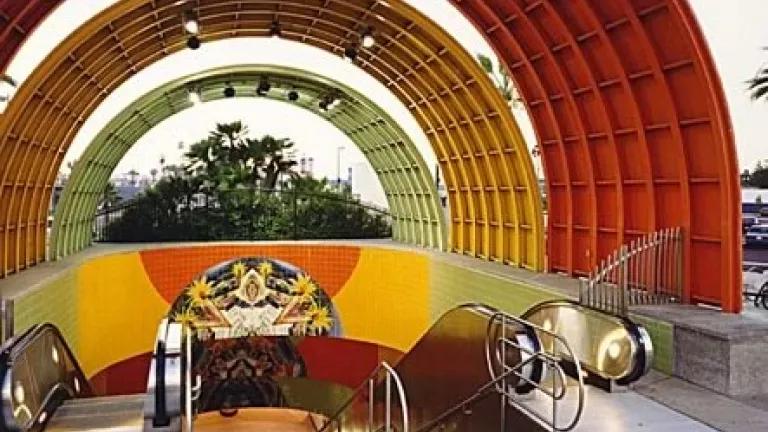
North Hollywood Station, Red and Orange Lines (Photo Courtesy of Metro, Los Angeles)
This summer, as Los Angeles area politicians and planners reflect on the ten-year anniversary of the extension of the Red Line subway to the San Fernando Valley, they are affirming what NRDC has been saying for a long time: investing in good transit can encourage commuters to use public transportation rather than cars and reduce the need for more freeways.
As I’ve discussed in past posts, Southern California leaders are now moving forward with a raft of significant transit projects. The Red Line experience should give them added confidence that these projects will improve mobility and reduce auto-dependence in the region.
At the time the Valley extension opened, Los Angeles County Supervisor Michael Antonovich called the project a “fiscal catastrophe.” But the California Department of Transportation (Caltrans) and others have said in recent weeks that the Red Line helped to slow the growth of traffic congestion in the Valley.
Caltrans District Director Doug Failing told the Daily News: "Over the last decade, we have experienced a steady increase in traffic on almost all our highways throughout the region . . . But when you take a look at [U.S. Highway] 101 - particularly when you look at the Cahuenga Pass - we haven't seen the growth there that we've seen in other places around the county."
While traffic on most other freeways in L.A. County has increased 10 to 15 percent in the last ten years, traffic on the portion of U.S. 101 that cuts through Cahuenga Pass has increased only 2 percent. Failing explained: “It's obvious that the Red Line is picking up that expected growth . . . Over a 10-year period, you'd expect at least a 25,000-vehicle increase, which is clearly not there."
While it’s true that ridership levels have fallen somewhat short of the ambitious targets initially set by transportation planners, the Red Line has been a success in many other respects, with a 2005 University of California at Berkeley study finding that it has indeed made a “measurable difference” in traffic.
The impact of individual transit projects like the Red Line will no doubt become that much more significant as more projects come online and improve system-wide connectivity. In the Valley, for instance, the Orange Line busway extension, the I-405 Transit Corridor included in Measure R, and a proposed bus-only lane on Van Nuys Boulevard could all increase access to the Red Line.
Of course, Metro and Mayor Antonio Villaraigosa are pushing to expand transit dramatically in Los Angeles County over the next ten years, with a system envisioned that will link Culver City and Pomona, Leimert Park and Century City, Torrance and Paramount. We can only hope that a decade from now, our transit system will have grown to the point that the laudable accomplishments of the Red Line will have begun to seem unremarkable.

